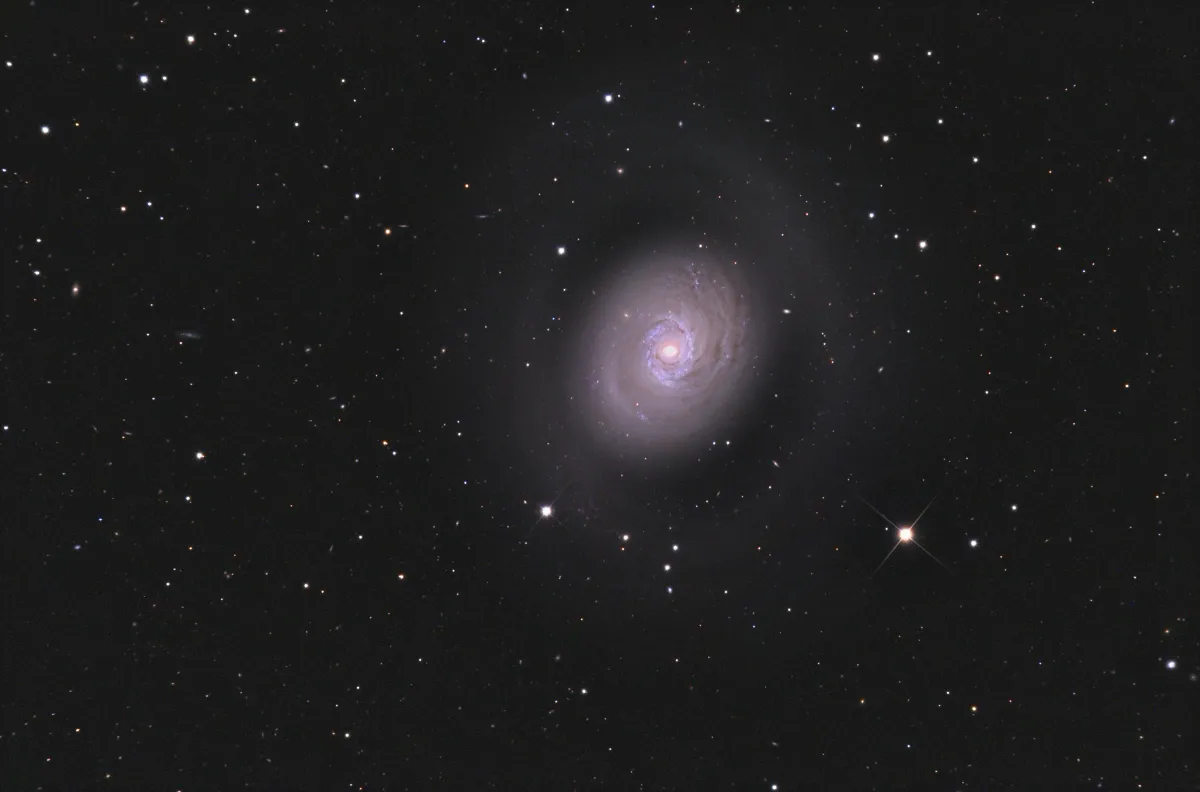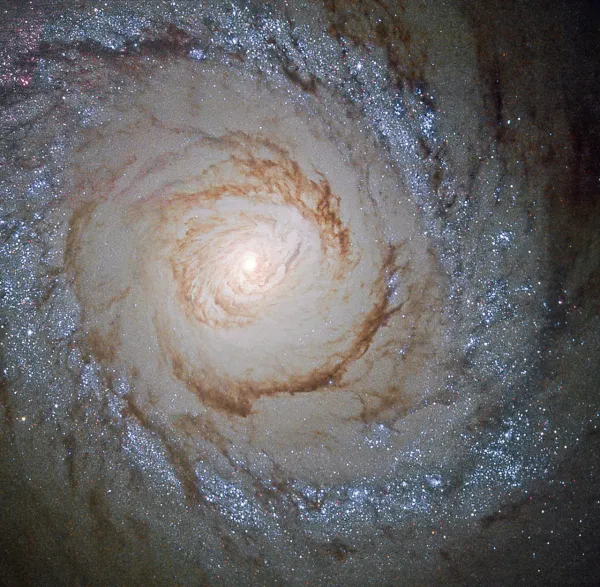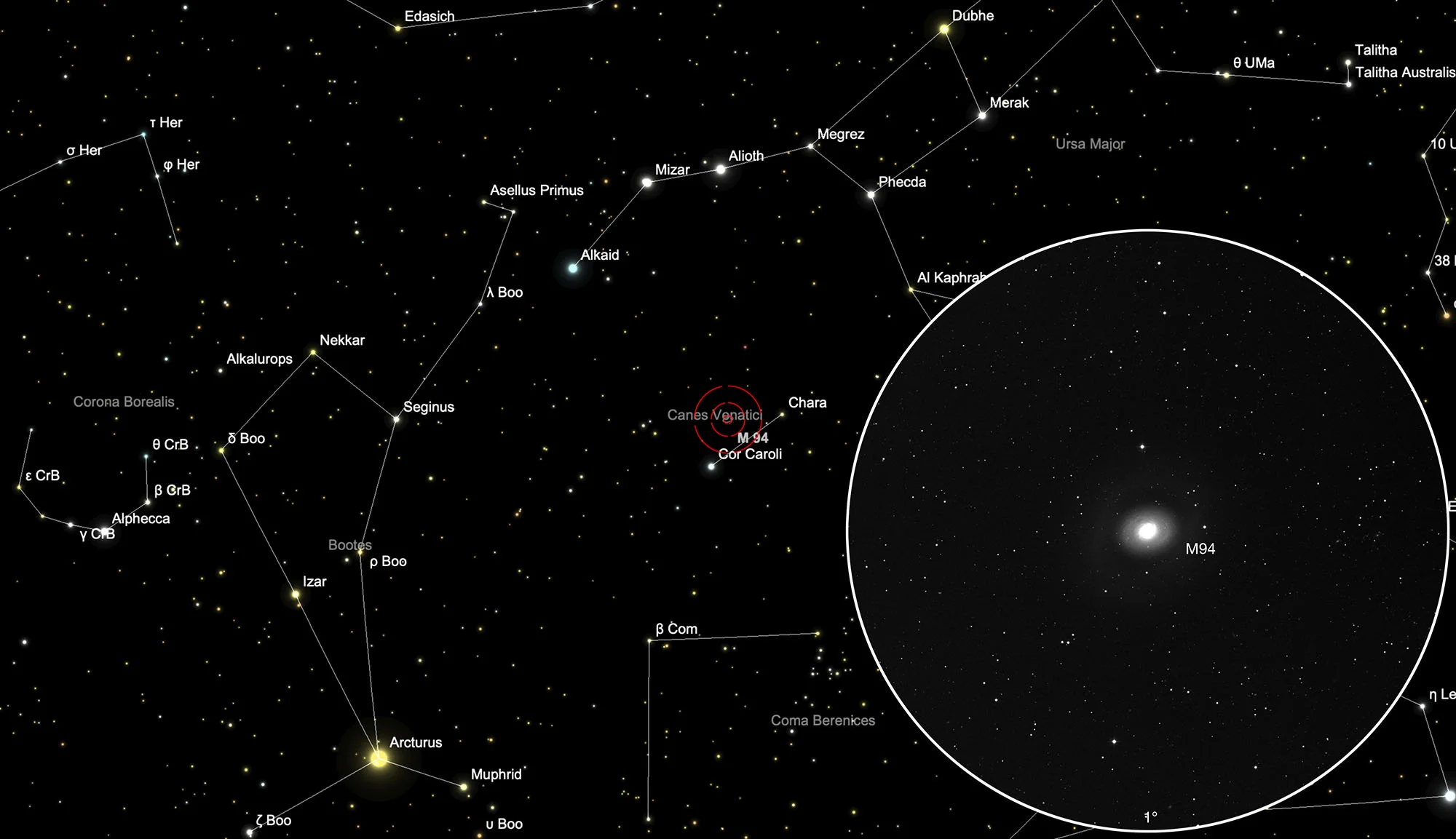Galaxy Messier 94

History
M 94 was discovered by Pierre Méchain on 22 March 1781. Charles Messier observed him two nights later and wrote: «Nebula without a star, above the heart of Karl [Cor Caroli], on the parallels of star no. 8, sixth magnitude after Flamsteeed: the centre is brilliant and the nebula a bit diffuse. It is like the nebula no. 79 below the hare; but this one is more beautiful and brighter. M. Méchain discovered it on 22 March 1781.» [281]
Physical Properties

M 94 is a spiral galaxy at a distance of 16 million light years. Around the centre there is a ring-shaped arrangement of elevated star formation, a so-called starburst ring. The age of these newly formed stars is estimated to be around 10 million years. Due to the strong radiation in this ring, M 94 is classified as Seyfert Type 2. The cause of this ring of star formation is probably a shock wave, which migrates from the centre outwards and compresses gas and dust in the outer regions. The gas then collapses into denser clouds until gravity has pulled the gas and dust together and condensed them enough that the temperature and pressure are high enough for nuclear fusion and a star is created.
In addition to the weaker outer ring, two weak spiral arms extend far out into the intergalactic space. Also noteworthy about M 94 is an obvious deficit of dark matter compared to other galaxies. The reason for this is still unknown and is the subject of further research. [196, 215]
| Designation | NGC 4736 |
| Type | Gx (Sab) |
| Right Ascension (J2000.0) | 12h 50m 53.1s |
| Declination (J2000.0) | +41° 07' 17" |
| Diameter | 14.4 × 12.1 arcmin |
| Photographic (blue) magnitude | 9.0 mag |
| Visual magnitude | 8.2 mag |
| Surface brightness | 13.1 mag·arcmin-2 |
| Position Angle | 117° |
| Redshift (z) | 0.001027 |
| Distance derived from z | 4.34 Mpc |
| Metric Distance | 5.130 Mpc |
| Dreyer Description | vB, L, iR, vsvmbMBN, r |
| Identification, Remarks | h 1456; GC 3258; M 94; UGC 7996; MCG 7-26-58; IRAS 12485+4123; CGCG 216-34; CGCG 217-1 |
Finder Chart
M 94 is located in the constellation Canes Venatici, about three degrees north of the star Cor Caroli (α Canum Venaticorum). The constellation is circumpolar and is highest in the night sky from December to September.
